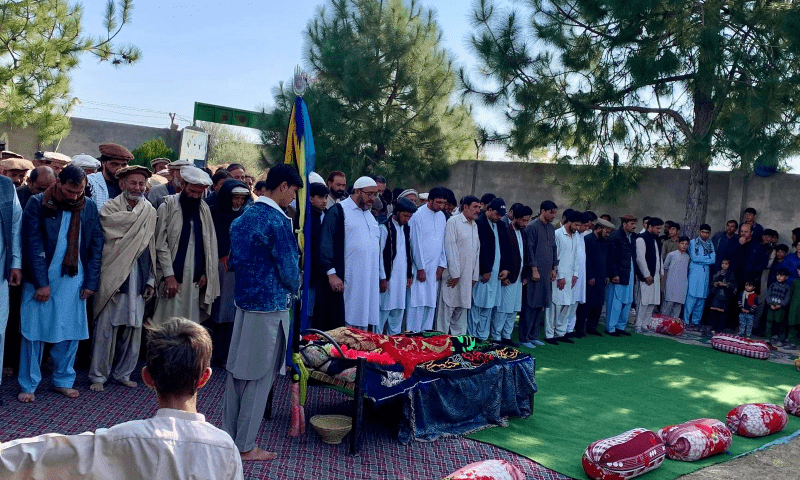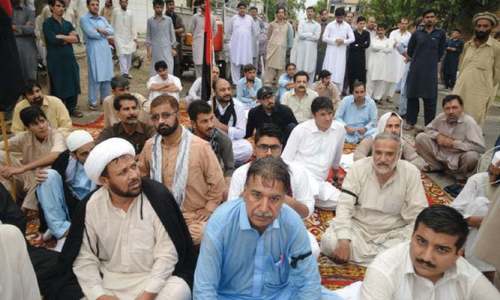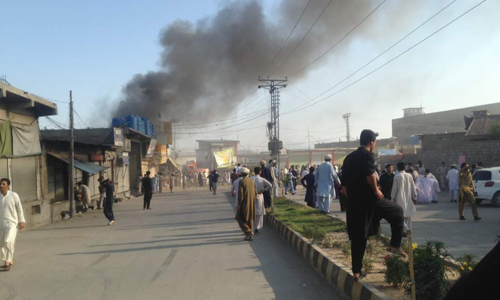Situationer: Kurram’s road to suffering
The temptation is to interpret what is happening in Kurram in hindsight; a place burning in the fires of hatred first stoked by the state some 40 years ago, amidst the altering of a bipolar world order through Afghan Jihad that ended the Cold War.
And how the flames of that fire have turned now, decades later, into the inferno of War __ Terror (let the reader fill in the blank with an on or of, depending on their experience of that war in Pakistan).
For increasingly, internal politics and geopolitics seem aligned in tactics and objectives, even when we are given to believe otherwise.
The temptation is to see the burning of Kurram not so much an issue of land disputes and sectarian bloodletting, but one of geo-political stoking of these fault lines, by national and international actors for wars ongoing and imminent.
And if you are someone who has observed or reported on Kurram and its politics over the last 20 years, the temptation is to give in to that terrible temptation.
Going without analgesics
Eclipsed by the noise and contradictions of a grand jirga appealing for peace, the desperate cries for reopening of the closed road into Kurram which the security establishment hinges to de-weaponisation, and the distrust of locals wary of their traumatic experiences — there is a woman who lives in Parachinar bazaar. Her name is Meena, a teacher and a mother of three daughters.
Sadda and Central Kurram get by somehow, with supplies coming in through the rough mountainous road that bypasses the main Thal-Parachinar road. Not Parachinar, though, which remains cut off
As gas and petrol supplies have dwindled over the 50 days of the road closure, the girls must walk a great distance in sub-zero temperatures to school — if and when it is open. Increasingly, students are missing school as means of conveyance become unavailable.
One of the daughters, Zarishta, went walking to school because she had exams and came back with a high fever. The standard medicines to treat fever — Panadol, Brufen — are no longer available anywhere.
“Last night, I saw on WhatsApp a share that said children are dying in large numbers of pneumonia,” she said, over the phone, a faceless tribal woman who has agreed to talk to a man, a stranger at that, out of desperation.
“With no gas and wood, people are resorting to coal, which is becoming hard to secure due to the cold weather. When available, it is of low quality, causing chest infections.
“In my school, children come without breakfast or lunch for lack of flour and fuel — I have students in the class who say they subsist only on tea, staying in blankets to keep warm. Today, the nanbai in our street said they are closing down because there is no flour left. We ration what we can; spare some to help neighbours more desperate than us, but it is never enough.”
There is no food for the babies on formula, she says, with children facing the freezing temperatures on an empty stomach and waning immunity to disease.
Babies of a barren land
There is a word in Pashto for the barren land — Lalma. For long, poets have spoken of the Lalmay Gul, the flower blooming in the desert. Little flowers growing in Lalma wither and die because it is their fate… they are flowers of a barren land.
There is a village, Lalma, in Kurram. Removed from the towns, it falls in a region where it seldom rains, close to the border with Afghanistan.
From a hospital in Parachinar, a doctor speaks of death, malnutrition, of hacking cough and fever plaguing children. Among them is Diva and she comes from Lalma.
A year and eight months of age, she is crying in pain. You can hear her on the phone as the doctor speaks to you distractedly, hurriedly. He says it is viral flu, readily complicated into pneumonia in the intense cold.
“In the absence of analgesics… people are resorting to heavy use of aspirin stored in their houses. In the case of children, it is causing liver failure. There are diseases whose diagnosis or causes cannot be ascertained because pathology labs have closed down in Kurram for want of medical supplies. Oral antibiotics to treat chest congestion are not available and where they are, they are fast running out.
“In serious cases, children need to be put on injectable antibiotics, but the medicine flown in by the government helicopter is for malaria and fungal infections, while we need ciprofloxacin, iron and vitamin supplements, Gravinate (for prevention of nausea and vertigo) etc for chest infections.
“We used to admit children in need of emergency treatment, but there is no gas to warm up the hospital wards and they are sent home to fend for themselves in minus-six or minus-four temperatures.”
As life comes to a standstill in Kurram, people go jobless, especially those who are labourers and daily wage-workers, says the doctor. They cannot afford the cost of hospitalisation and medicine anymore. And that is the situation in cities like Sada and Parachinar. “Patients from villages like Lalma rarely reach here, so we have no idea how desperate the situation is in the villages,” says the doctor.
Both Meena and the doctor say babies are facing severe malnutrition because of a shortage of formula milk in the market. Brands like Lactogen are no longer locally available.
Subsisting on tomatoes
A random share from someone in Kurram reads: “No water, as no petrol or diesel to bring the water tanker home. No vegetables, no fruit, no medicines, no common food items anymore. No eggs, no meat, no biscuits etc. No salt even. No hope. Pakistani government and the establishment has abandoned us.”
Some are lucky, though. They have tomatoes. Kurram has just come out of tomato-growing season and with little else left to eat –and the roads closed, with no way to send the produce to other districts as they usually do – they are on a diet confined to tomatoes, day in and out. “It is like the time when we were trapped for four years, living off the land,” says a farmer from a village near Parachinar.
But those were different times. The border to neighbouring Afghanistan was open; people who could not travel through the Thal-Parachinar road, as now, could do so through that country. Unlike now, supplies were coming in through the border.
Now, the border is closed, as are the banks and bakeries. There are no supplies left and the grocery stores are shutting down, too.
“The roads to Kurram are all open,” says a tribal elder in Sada, Lower Kurram. “But one cannot traverse them out of fear because they run through rival territories.”
Sadda and Central Kurram get by somehow, with supplies coming in through the rough mountainous road of Tora Wari that connects to Daaba near Thal, bypassing the main Thal-Parachinar road.
Not Parachinar, though, which remains cut off from the border, the main road and the mountain routes. After the Nov 21 incident and its aftermath, that left more than 130 dead, people have no confidence in government convoys to get people or provisions through locations like Bhagan, where emotions run high and patience is in short supply.
As the grand jirga in Kohat ended up undecided on how to open the road earlier this week, people asked if the authorities cannot open the road, who would?
Published in Dawn, December 13th, 2024






Dear visitor, the comments section is undergoing an overhaul and will return soon.